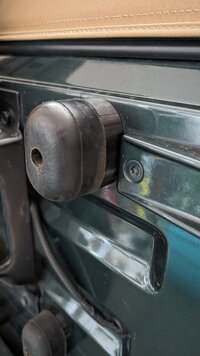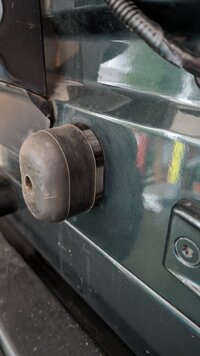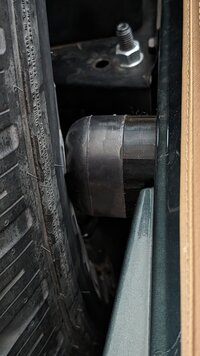I'm interested in buying one of these from you if you're down to share. ha
No problem. I will print one for you. PM me your address and I will get one over to you.
I'm interested in buying one of these from you if you're down to share. ha
Thanks. I am going to make it this weekend.Updated the post with a Printables link. TinkerCAD link is in the Printables description too if you want to play with the design.
Updated the post with a Printables link. TinkerCAD link is in the Printables description too if you want to play with the design.
After finding out that my 97 didn’t come with (what I call) a water guard over the cabin air intake hole under the cowl, I’ve wanted to find someone to help me design and print one… with the possibility of adding a spot where a filter could be added.
I would love to stop getting blasted with sand the first time the heater is used, and I’m sure my GF would appreciate me eliminating the foot wash feature that happens when going 55mph+ in heavy rain…
Windstar air intake adapter.
Unblended polycarbonate, so it's good for all underhood temperatures up to about 300°F. All but the thinnest sections are 20% infilled to add thermal decoupling to the underhood air. Most of the tube is also able to be insulated.
Interior (not visible in photos) is very smooth and curved to allow as little airflow restriction as possible.
Took 12 hours to print. Had the heated chamber up to 89°C, bed temperature at 155°C, extruder at 320°C, 100 mm/s on all print settings.
Did have one blob of death start, but fortunately the part broke free and I woke up to spaghetti instead. Even though that print failed, I did get to see just how strong it was. Could not break the tube even by stomping it with my boot.
Pure polycarbonate prints like PLA once you get the temperatures right.
View attachment 458994
View attachment 458995
View attachment 458999
Very nice! that print quality look great!
Windstar air intake adapter.
Unblended polycarbonate, so it's good for all underhood temperatures up to about 300°F. All but the thinnest sections are 20% infilled to add thermal decoupling to the underhood air. Most of the tube is also able to be insulated.
Interior (not visible in photos) is very smooth and curved to allow as little airflow restriction as possible.
Took 12 hours to print. Had the heated chamber up to 89°C, bed temperature at 155°C, extruder at 320°C, 100 mm/s on all print settings.
Did have one blob of death start, but fortunately the part broke free and I woke up to spaghetti instead. Even though that print failed, I did get to see just how strong it was. Could not break the tube even by stomping it with my boot.
Pure polycarbonate prints like PLA once you get the temperatures right.
View attachment 458994
View attachment 458995
View attachment 458999
Where are you placing your intake? You could squeeze this in a smaller package with a shorter snout. Do you have any indication of how the air travels with the sharper edges vs the Windstar OEM?
I didn’t 3-D print it, but someone local did: a tray for the middle console. Fits nice and is about 3.5” deep.



You might find these posts interesting, though I have a sneaking suspicion your 97's fresh air opening in the cowl looks a little different than mine...
[URL][URL]https://wranglertjforum.com/threads/what-did-you-do-to-your-tj-today.1784/post-1396534[/URL][/URL]
[URL][URL]https://wranglertjforum.com/threads/what-did-you-do-to-your-tj-today.1784/post-1397212[/URL][/URL]
[URL][URL]https://wranglertjforum.com/threads/what-did-you-do-to-your-tj-today.1784/post-1398333[/URL][/URL]
Thanks! It does look like the same shape and all… would you be willing to print and sell these? Or perhaps just share the design files? I think I know someone locally who would print it for me. What material did you use/suggest?
I would recommend ABS or ASA for the filament. PLA is a very common and inexpensive filament but isn't suitable for this application.
Did you get any? I need two

